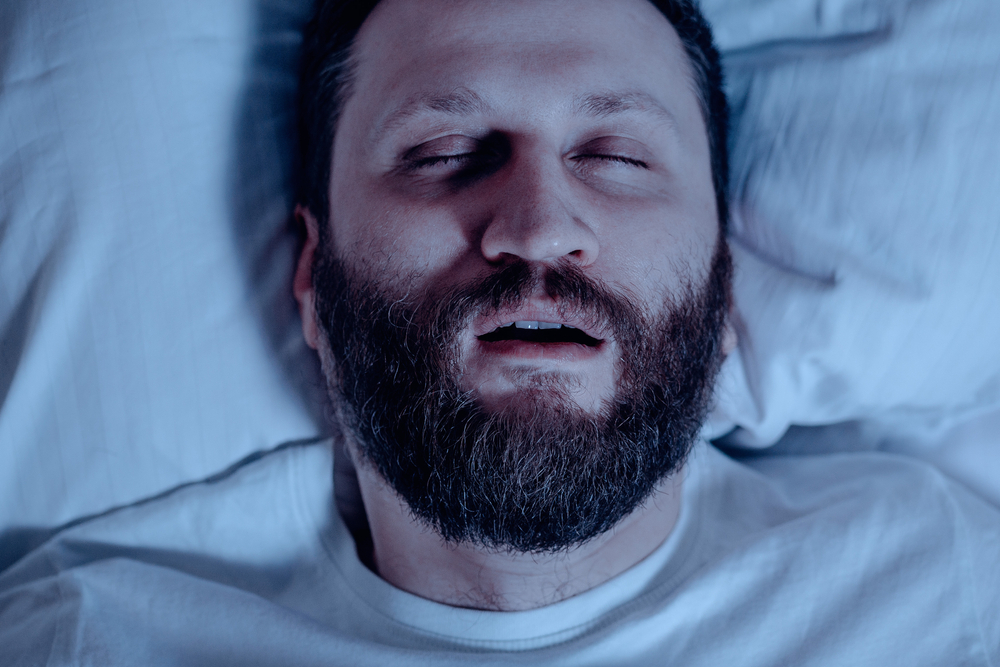The STOP-Bang Questionnaire is a way that doctors can try to rapidly evaluate your risk of having obstructive sleep apnea (OSA). By asking questions about health issues related to the risk of developing sleep apnea, the STOP-Bang Questionnaire is designed to help detect whether you might have undiagnosed OSA.
However, the STOP-Bang Questionnaire cannot diagnose obstructive sleep apnea. Your doctor must order a sleep study to determine whether you have OSA. In addition, many experts have doubts about the accuracy of STOP-Bang scores. As a result, doctors tend to limit its use to specific situations.
We cover how the STOP-Bang Questionnaire works, what different scores mean, and the survey’s strengths, weaknesses, and most common uses.
What Is the STOP-Bang Questionnaire?
The STOP-Bang Questionnaire is a tool that doctors can use to quickly assess your risk of having obstructive sleep apnea. It involves a series of eight yes-or-no questions. These questions, reflected in the STOP-Bang acronym, relate to known risk factors for OSA.
| Risk Factor | Question | Why It Matters |
|---|---|---|
| Snoring | Do you snore loudly enough to disrupt a bed partner or be heard through a door? | Loud and frequent snoring is a common symptom of OSA. |
| Tiredness | Are you often noticeably sleepy or fatigued during the day? | People with OSA often feel very tired or doze off during the day. |
| Observed Apneas | Has someone seen you gasp, choke, or stop breathing while sleeping? | OSA involves repeated temporary lapses in breathing called apneas. |
| Pressure | Do you have high blood pressure? | High blood pressure is frequently associated with OSA. |
| Body mass index (BMI) | Is your body mass index over 35? | People with obesity are more likely to have OSA. |
| Age | Are you older than 50? | OSA becomes more common with aging. |
| Neck circumference | Is the circumference of your neck more than 16 inches? | Having a larger neck is a risk factor for OSA. |
| Gender (sex) | Were you assigned male at birth? | People of male sex have a higher risk of OSA. |
For each question, the doctor records the answer as either yes or no. After completing the survey, the doctor adds the total number of “yes” answers together to calculate the STOP-Bang score.
What Does a STOP-Bang Score Tell You?
The STOP-Bang score tells you whether you have a low, intermediate, or high risk of having obstructive sleep apnea. This score is the total number of “yes” answers to the eight questions on the questionnaire.
| STOP-Bang Score | Risk of OSA |
|---|---|
| 0 to 2 | Low risk of obstructive sleep apnea |
| 3 to 4 | Intermediate risk of obstructive sleep apnea |
| 5 to 8 | High risk of obstructive sleep apnea |
It is essential to note that the STOP-Bang score does not diagnose you with obstructive sleep apnea. Instead, the STOP-Bang Questionnaire may help your doctor determine if you need a sleep study to check for OSA. A sleep study can directly measure how often you have reductions in breathing during sleep, which is necessary for an OSA diagnosis.
Is the STOP-Bang Questionnaire Accurate?
The STOP-Bang Questionnaire may be useful in certain contexts, but many sleep experts do not consider it accurate enough for widespread use.
The STOP-Bang score is most dependable for people with low scores of 1 or 2, who are unlikely to have OSA. It’s less dependable for people with intermediate or high scores, many of whom do not have OSA. In fact, studies have found that roughly 60% of people that the questionnaire would expect to have OSA don’t actually have the condition.
There may also be variability in the accuracy of the STOP-Bang Questionnaire across different groups of people. For example, while the body mass index used in the questionnaire has been evaluated in people who are White, this may need to be adjusted in people with different backgrounds.
Adaptations of the STOP-Bang Questionnaire
Some researchers have proposed modifications to the original STOP-Bang Questionnaire in order to address some of the concerns about its accuracy.
The Enhanced STOP-Bang Questionnaire involves adding a second step to the interpretation of scores of 3 or 4. In this modification, if a person answers yes to at least two of the STOP questions and at least one of the questions about body mass index, neck circumference, or male sex, then they are considered to have a high risk of obstructive sleep apnea.
Another potential modification of the STOP-Bang Questionnaire is to use a different cutoff for body mass index based on a person’s background and nationality.
Doctors may also incorporate information from other tests when interpreting the STOP-Bang score. For example, the results of a common test of carbon dioxide in the blood may help predict a person’s risk of having OSA when evaluated alongside their STOP-Bang score.
What Are the Benefits of the STOP-Bang Questionnaire?
The primary benefit of the STOP-Bang Questionnaire is that it’s convenient to conduct. In most cases, it takes just a couple of minutes to go through the questions and calculate the result. For busy doctors, this makes the STOP-Bang Questionnaire a time-efficient way to assess a person’s risk of sleep apnea.
The questions are straightforward, which means that the test is accessible to doctors who are not specialists in sleep medicine. Simple questions also make it easier for individuals to understand and respond to the survey.
In addition, while there are limitations to the overall accuracy of the STOP-Bang Questionnaire, doctors can generally be confident that people with very low scores do not have OSA. The questionnaire may also be helpful in specific medical situations, such as before a person has surgery.
Are There Downsides to Using the STOP-Bang Questionnaire?
There are several potential downsides to doctors using the STOP-Bang Questionnaire.
- Risk of false-positive results: One problem with the STOP-Bang Questionnaire is that a high percentage of people without OSA may receive intermediate or high scores. These people may receive unnecessary testing and experience undue worry about their health.
- Risk of false-negative results: Although it happens infrequently, the STOP-Bang Questionnaire may return a low score for someone who actually has OSA. This can cause the condition to remain undiagnosed and untreated.
- Not broadly validated: Not enough research is available to know how well the STOP-Bang Questionnaire works in the general population or across specific groups of people.
- Can’t replace sleep studies: Using the STOP-Bang tool may offer background information about a person’s risk of having OSA, but it does not remove the need for more specialized sleep studies.
Ways to Use the STOP-Bang Questionnaire
Because of its limitations, the STOP-Bang Questionnaire is not a part of routine health care. Organizations of medical experts have reviewed the existing studies and determined that the STOP-Bang Questionnaire should not be broadly used in people who do not have symptoms of OSA.
However, there are some specific situations in which the STOP-Bang Questionnaire may be useful to doctors, especially those who are not sleep specialists.
The STOP-Bang Questionnaire in Preparing for Surgery
Doctors often use the STOP-Bang Questionnaire in the process of preparing a person for a surgical operation.
People with OSA are more likely to experience complications when they have surgery. While a significant number of people who go in for surgery have OSA, many of them have not yet been diagnosed with the condition.
Because of its convenience, doctors can use the STOP-Bang Questionnaire to promptly identify individuals who may be at a higher risk of having OSA and related surgical complications. Many medical experts recommend that people preparing for surgery answer the eight questions needed to calculate their STOP-Bang scores.
The STOP-Bang Questionnaire in People Admitted to the Hospital
For people who are admitted to the hospital as inpatients, a doctor or nurse may be able to use the STOP-Bang Questionnaire to quickly assess whether they might have OSA. OSA may affect a person’s symptoms and overall recovery from the condition that put them in the hospital.
Are There Other Questionnaires Similar to the STOP-Bang Questionnaire?
Besides the STOP-Bang Questionnaire, several other tools can help doctors identify people who may have undiagnosed obstructive sleep apnea. These include:
- The Berlin Questionnaire
- The Sleep Apnea Clinical Score
- The NoSAS Score
- The Multivariable Apnea Prediction (MVAP) Instrument
Of these different tools, the STOP-Bang Questionnaire has been most well-validated in research studies. Nevertheless, none of these questionnaires or scores, including STOP-Bang, can diagnose obstructive sleep apnea.











